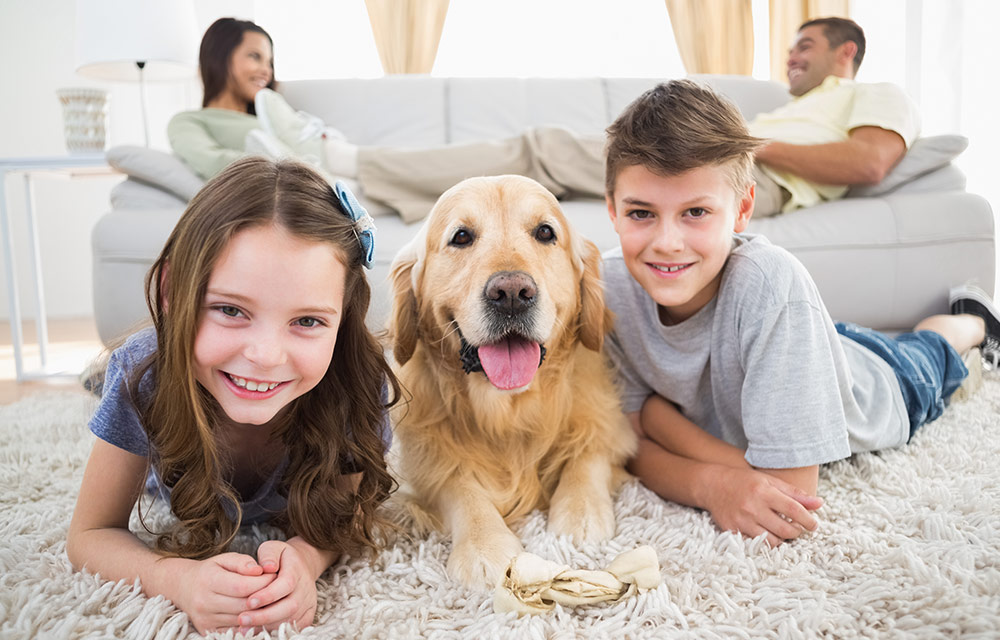This past weekend, my daughter reached a huge social milestone. She got invited to her first play date! Although I was excited about this new venture and my daughter to have this playtime with a peer, my first thought was, “I wonder if they have a family dog”? Crazy, right? Sometimes, turning off my “work” brain can be challenging. Based on my experience with kids and dogs, this question ranks right up there with “Do you keep guns in the home.”
According to the APPA (American Pet Products Association), 68% of US families have a dog in the home. When coupled with statistics from the CDC, estimating that a dog has bitten half of all children 12 years of age and under can be a bit scary, mainly because many of these dog bites come from a dog with which the child is acquainted. As parents, it is not only our responsibility to make sure our child is safe around our pets but also our friends. Unfortunately, this begs the question, “How do I approach this topic with my friends without sounding crazy or offensive?” For the safety of your children, I recommend following the steps below:
Step 1: Could you invite yourself along for the first play date? Be sure to supervise your child at all times, and begin to evaluate the family’s pet. In casual conversation, you can ask questions such as:
- “How old is your dog?” – this question is vital because the older a dog, the more their tolerance level for kids could decrease
- “Does the dog have any health issues?” This is another essential question to dictate a dog’s tolerance level around kids.
- “Has he/she been raised with your child since birth?”- this answer gives us an idea of whether or not the dog has adapted to children and is used to the behaviors associated with a particular age group. If the dog were just adopted, we would have no way of knowing its past experiences with kids. A newly adopted dog will be exposed to unknown behaviors for up to 3 months.
- “What breed of dog is that?” – This question is essential because we breed dogs for various reasons. Knowing this information could help you correlate the dog’s bite style and the general characteristics of that breed. But always remember that ALL dogs are capable of biting!
Step 2: After or throughout your questioning, begin looking for the following actions/signs in their dog:
- Avoidance/Displacement behaviors (if the dog tries to run away, yawns, etc. For a complete list, click here)
- Predatory Behaviors: staring at the children, stalking the children, whining and pacing, etc. A dog displaying that is the most dangerous situation because sometimes there is no sign from the dog before acting on this drive. Sometimes, the dog is building and becomes so frustrated that it can be confused with the dog being “excited.”
- Unruly behavior: This would lead to more accidental injuries if the dog became overly excited and tried to jump on the children or knock them down.
- Shows of Dominance: If the dog begins to attempt to hump or mount the children
- Remember, just because their dog is neutral in its interactions with their child does NOT mean they will automatically treat yours the same way!
If you are uncomfortable with any of the responses you get to the questions from step 1, or if the dog is exhibiting any of the behaviors from step 2, I highly suggest you remove your child from the situation or at least move the play away from the dog. Please listen when I tell you that when it comes to the safety of your child and the trauma they could experience from a dog bite, you can never be too cautious. Not every dog bite makes the news. The guilt you feel for not protecting your kid from a dog nip is not worth the few precautionary steps you should take to prevent it, even if it feels uncomfortable to question a friend.
If you are uncomfortable with your child playing at a friend’s house until they are old enough to understand the rules and boundaries of interacting with other dogs, that is ok! We have to protect them now; that is our job. I suggest just being honest with the parents. Could you tell them you are extra cautious because of their family pet or offer a play date in a more neutral area? Remember, education is vital! These conversations with your friends or other parents could also positively affect their understanding of child-dog relationships.



